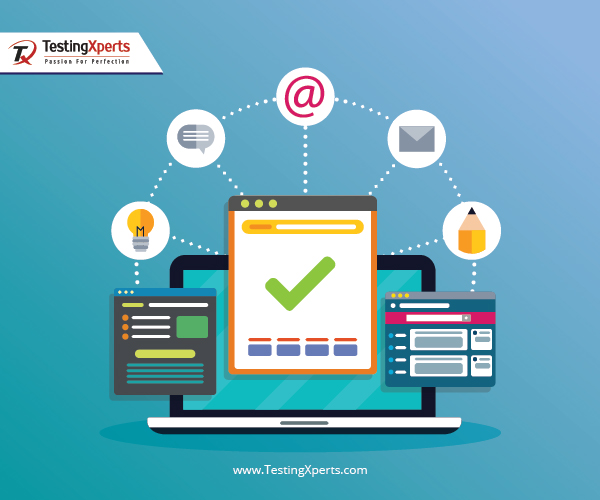User Acceptance Testing: What It Is, Why It Matters, and How to Do It
No, the person you work for is,
above all else, the customer. So when you’re testing the software the customer
has commissioned you to create, you better make sure it works in just the way
they want it to. Because there are many types of software testing, and they all
perform different functions, but the one type of software testing we’re most
concerned within this post is user acceptance testing, sometimes called beta
testing or end-user testing. It’s the kind of test that puts the customer front
and center.
What is User Acceptance Testing?
Earlier we are able to define user acceptance testing (UAT), we have
to specify its specific pieces.
The “user" is the customer
who hired one to build them a software product or even the user of the software
you will be selling to, and acceptance" suggests agreement or approval.
Therefore it follows that the significance of user approval testing is,
“software testing conducted with the user or client to ascertain whether it
really is approved for release or not."
UAT is often the very last test
tool that undergoes right after integration testing, end Testing, and every other
kind of testing needed for the particular applications item. The purpose of
UAT? To confirm your applications meet business requirements and user needs.
Does the User Acceptance Testing Issue?
If you do functional assessments
(that are usually undertaken with quality assurance engineers), you validate
the applications against operational specs. All these are specifications that
no one out of developers fully comprehends or cares about. But only since the
computer software works properly does not signify it will soon be well-received
or enjoyed by its intended viewer. Certain business specifications and
procedures are only known by clients or users; which is why user approval
testing is therefore vital.
Applicationmers have a tendency
to come up with tunnel vision when working on the same application for lengthy
stretches of time and cannot appraise and assess what, especially the side of the software. The different issue UAT solves is post-release bugs, mistakes, or bad
consumer expertise. These bugs might perhaps not show up in different
evaluations but they could come to be apparent from the app style or stream of
attributes. Repairing these flaws before the software is released will probably
reduce the first negative feelings or opinions of your applications.
What's an Individual Acceptance Testing Procedure?
Different DevOps groups are going
to have slightly different processes, however, we'll give you a general 5-step the course of action that many teams loosely follow along.
The 5 steps would be:
- Setting up
- Execution
- Documentation
- Evaluation
- Reporting
- Let us dig into each at a moment.
1. Planning
The very first step from user acceptance testing is a verification activity process is arranging.
Very first, launch your UAT
schedule as well as the QA representatives and testers you are likely to need
through the duration of your project. A useful practice would be to draft an
idea of exactly what your own analyzing group needs to look like and work off
of the.
Subsequently, sit and pick what exactly will be involved in the
execution of UAT, for example, their functions and responsibilities. Once that's
completed, bring your UAT team with each other to make sure everyone
understands their duties, set transparent communication methods, and prep them
to get examining.
During the UAT process, it's
important to follow a specific workflow, therefore, you can efficiently manage
errors, bugs, and other defects or problems. Ahead of time, settle on just how
you're likely to document problems and just how testers will communicate
exactly the difficulties you would like recorded.
2. Execution
You will find a variety of
methods by which that you can manage the implementation of UAT. 1 means is to
bring the testers to your facility and have they perform exactly the testing
there. But if you should be attempting to sell the software to end-users
worldwide, then you will most likely not be able to fulfill your instincts in
individual.
In this instance, run on one
sessions with either via Zoom or Skype or any other on-line telecom software.
This can provide you with tons of qualitative and quantitative data in
consumers.
You'll find insights that you've
never believed, you are going to gain a better understanding of how informed
your ending user is already, and you're going to be better positioned to switch
or tweak all the crucial aspects of one's applications to help it become exmobileent.
3. Documentation
- Ensure whatever you utilize allows you to capture bugs, user feedback, abnormalities, and any other significant observations.
- And Stay in your mind that the aims of UAT when documenting progress:
- Verify the computer software implements firm functions (as intended).
- Confirm the application is useful and usable from the end user's view.
- Confirm the software is compliant with regulatory and other legal conditions.
- Certify that the software is ready to go into production.
4. Evaluation
It is at this phase that you need
to evaluate whether the requirements was tested and met. This is the broadest
period of UAT as you're collecting, aggregating, and analyzing information.
You Ought to Strive to answer the
Subsequent questions:
- Which assessments neglected (if any)?
- What issues occurred?
- Who is accountable to your problems and are they solved?
- Exactly how many testers completed the evaluation instance?
- What's that the rating of these test scenarios?
- What's that the frame of thoughts of every single freshman?
- What emotional state was just about every tester in?
5. Reporting
This is the phase where you
evaluate the larger picture of UAT. The lessons learned and insights acquired.
It's that info, after what's done and said, which permits one to enhance
upcoming test cases and also optimize your UAT workflow.
Which are the Roles and Tasks of this Consumer Acceptance Testing
Staff?
An average UAT crew consists of
the firm application director, UAT evaluation director, along with UAT test
group.
We will pay for everyone below.
Business Software Manager
The business application director
is to blame for approving and reviewing the UAT assessment strategy and
prepare. They're also accountable for making certain the UAT process is
performed on schedule and on funding. In addition, they track the development of
the project and do the job side by side with business surgeries.
UAT Test Manager
The UAT test manager will really
formulate the UAT strategy and approach. Additionally, they will examine and
accept test cases, test cases, and send each week reports. And if you are
making use of a fresh or advanced workflow, then they truly are in charge of
driving metrics collection to assess the great things about the analyzing
techniques, tools, and environment.
UAT Test Team
The UAT evaluation group prepares
and implements exactly the UAT test plan, for example, test scenarios, test
cases, and test info. It truly is their obligation to verify and confirm
business conditions are being met and also flaws are being claimed. Additionally, they make test logs and examine summaries.
Person Acceptance Testing Methods
Given that you-know-what approval
testing is and what it is maybe not, let us take a look in the several types of
how UAT tests you may run.
- We'll dive right into the Subsequent:
- Alpha Testing
- Beta-testing
- Contract Acceptance Testing
- Legislation Acceptance Testing
- Operational Acceptance Testing
Alpha testing is conducted to
find all the potential bugs and bugs in your applications until you release it
publicly. The goal is to simulate actual people, so artisans are tasked with
executing ordinary activities that routine users will probably do. These tests
are generally conducted in a lab environment from the development group. You
can also visit here to learn more
about user acceptance testing.
Beta Testing
Beta-testing is done by genuine,
regular men and women. Actual end consumers of this applications in a "real
surroundings" - significance, outside a lab in the surroundings (therefore)
the computer software is properly used normally when it had been available.
A small quantity of users will soon be authorized to get and apply the software
for a predetermined period of time. You may get invaluable feedback from their
website in regards to the solution's high quality and features.
The purpose of beta testing is
always to reduce risks of collapse and provide a high-quality product by way of
consumer support. That is pretty much the final test before releasing this
software.
Contract Acceptance Testing
Deal acceptance testing is if
applications are analyzed against particular specifications and criteria
arranged on your contract.
The creation workforce defines
the criteria to get approval for the contract itself to set the specs they
would want to fulfill in the final item.
Regulation Acceptance Testing
Regulation acceptance testing,
otherwise known as compliance acceptance testing, examines the applications to
be certain it complies with regulations regulating your industry.
Operational Acceptance Testing
Operational approval testing,
additionally known as production approval testing, helps ensure that workflows
are in place to enable the software to be used efficiently. This consists of
backup options, user training, care procedures, safety tests, etc.





Comments
Post a Comment